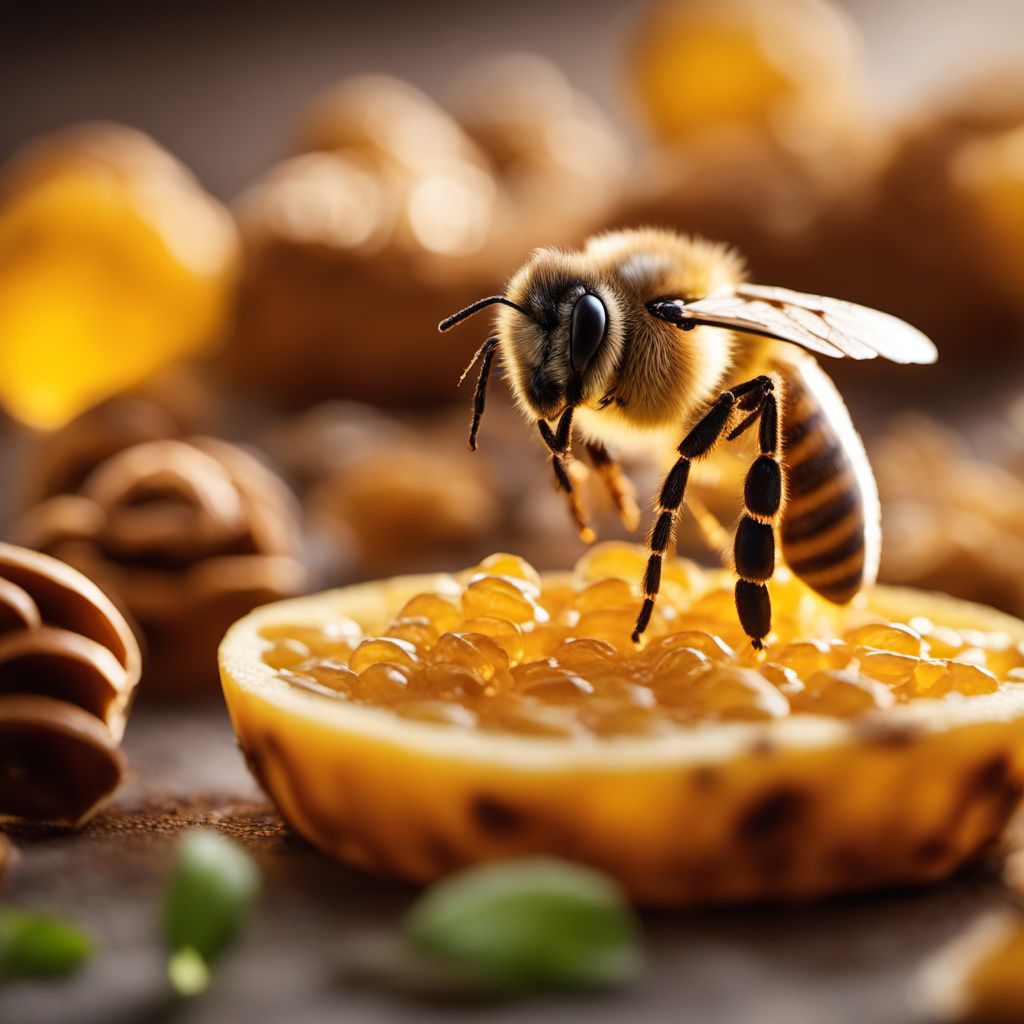
Ingredient
Other edible apiculture products
The Sweet Bounty of the Beehive: Exploring Other Edible Apiculture Delights
Other edible apiculture products include honeycomb, royal jelly, bee pollen, and propolis. Honeycomb is a waxy structure made by bees to store honey, and its chewy texture and delicate sweetness make it a delightful addition to cheese boards or desserts. Royal jelly, a secretion produced by worker bees, is rich in nutrients and has a creamy consistency with a slightly tangy flavor. Bee pollen, collected by bees from flowers, is a nutrient-dense ingredient with a slightly floral taste and a crunchy texture. Propolis, a resinous substance bees use to seal their hives, has a complex flavor profile, ranging from bitter to sweet, and is often used in natural remedies and health supplements.
Origins and history
The consumption of other edible apiculture products dates back centuries, with evidence of their use in ancient civilizations such as Egypt, Greece, and China. These products have been valued for their medicinal properties and nutritional benefits, and their cultural significance can be traced through various traditional practices and folklore.
Nutritional information
Other edible apiculture products are rich in essential nutrients. Honeycomb is a source of carbohydrates and antioxidants. Royal jelly is known for its high protein content, vitamins, and minerals. Bee pollen is a nutrient powerhouse, containing proteins, vitamins, minerals, and antioxidants. Propolis is rich in bioactive compounds, including flavonoids and phenolic acids, which contribute to its potential health benefits.
Allergens
Bee products, including other edible apiculture products, may cause allergic reactions in individuals with bee-related allergies. It is important to exercise caution and consult with a healthcare professional if you have known allergies.
How to select
When selecting other edible apiculture products, look for honeycomb that is firm and free from mold or signs of spoilage. Royal jelly should be fresh, with a creamy consistency and a slightly acidic aroma. Bee pollen should be dry, with vibrant colors and a pleasant scent. Propolis can be found in various forms, such as tinctures or capsules, and it is important to choose reputable sources that ensure purity and quality.
Storage recommendations
Honeycomb should be stored in a cool, dry place away from direct sunlight to prevent melting or crystallization. Royal jelly should be refrigerated to maintain its freshness. Bee pollen should be stored in an airtight container in a cool, dark place to preserve its nutritional value. Propolis products should be stored according to the manufacturer's instructions, typically in a cool and dry environment.
How to produce
Producing other edible apiculture products requires specialized knowledge and equipment. It is best left to experienced beekeepers who can ensure the well-being of the bees and maintain the quality of the products.
Preparation tips
Honeycomb can be enjoyed as is or used as a topping for desserts, salads, or cheese platters. Royal jelly is often consumed as a dietary supplement or used in skincare products. Bee pollen can be sprinkled over smoothies, yogurt, or salads for added nutrition and texture. Propolis can be used in tinctures, capsules, or as an ingredient in natural remedies or health supplements.
Culinary uses
Other edible apiculture products are commonly used in various culinary applications. Honeycomb adds a unique texture and sweetness to dishes, while royal jelly can be incorporated into smoothies, dressings, or desserts. Bee pollen is often used as a topping or ingredient in health-conscious recipes, and propolis can be found in natural remedies or used as a dietary supplement.
Availability
Other edible apiculture products are commonly available in regions where beekeeping is practiced, such as Europe, North America, and parts of Asia. However, availability may vary depending on local beekeeping practices and market demand.

